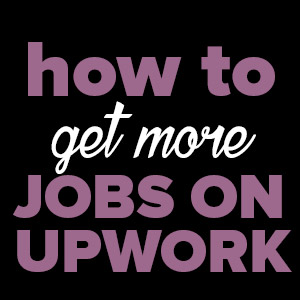A version of this article previously appeared on Skillcrush, an online education program for creatives, thinkers, and makers that gives total tech newbies the tools to make major career changes.
Confession-time: I’m a goal-setting junkie. I LOVE goals. Setting them, planning out how I’ll reach them, and most of all—actually achieving them.
Naturally, as a goal lover, I’m also a bit obsessed with all of the different frameworks and processes for setting and achieving my dreams. The only catch? It seems like everyone and their brother has a different methodology for locking down a dream career or finding success.
There are so many pathways to achievement that the prospect of digging through all of them to find what best works for you can seem daunting. But I’m here to encourage you not to give up!

Free MEGA Guide
86 Ways to Make Money Online
Download our free guide on legitimate ways to make money online in 2021
By signing up, you are agreeing to receive periodic emails from Fulltime Nomad. No spam. Only the good stuff.
Discovering what method best helps you accomplish your goals is invaluable knowledge to have so don’t be afraid to shop around until you find one that really works. If you’re looking for a place to get started, check out one of my favorites systems—S.M.A.R.T.
In 1981, George T. Doran, a consultant and former Director of Corporate Planning for Washington Water Power Company, wrote a paper for Management Review called “There’s a S.M.A.R.T. way to write management’s goals and objectives” in which he detailed five criteria for creating business goals.
The great part about his method is its applicability—it can be used to create a framework for any kind of goal. To get started with this system you need a broad goal, something like, “I want to learn tech skills.” Then, by applying the S.M.A.R.T. criteria to it, you’ll develop a goal that’s more defined, has clear completion criteria and steps, and is, therefore, more attainable.
S = Specific
Goals need to be specific in order for you to choose the correct stepping stones to achieving them. So “learn tech skills” isn’t going to cut it. Tech is a broad term that could include anything from how to use specific computer programs to how to program a space shuttle. In order for the S.M.A.R.T. system to work, you’ll need to figure out exactly what you want to learn and then define it in clear terms. Connecting a skill, position, or another achievement to a concrete task gives you a logical progression to get to an otherwise nebulous thing. Here are a few examples of good task/goal statements:
- Learn HTML & CSS so that I can build my first website from scratch
- Learn logo and visual identity design so that I can brand my freelance business
- Learn to develop WordPress websites so that I can expand my client base by offering more personalized site building services
Each one of these goal statements is specific and gives you a clear-cut idea of how the skill directly leads to the goal. You may find as you write out your goal/skill statements that they don’t always correlate.l…………..
That’s fine—now is the time for adjustment. Make sure your goal statement doesn’t just sound good, but that it’s also a logical connection from skill to accomplishment.
M = Measurable
Goals that can’t be measured are too ambiguous to achieve—without measurable criteria, you won’t know if you’ve reached the finish line. This is another example of why “learn tech skills” on its own isn’t an effective goal.
How do you measure it? You could spend your entire life learning tech skills (and probably will just because of the nature of tech) but never end up learning the select tools that will help you accomplish your own specific goal. This is where the first step of the S.M.A.R.T. system lends a helping hand.
Sometimes you’ll find that if your goals are specific enough from the beginning, they’re automatically measurable. Take a look at the list of skills/goals from the first step:
- Learn HTML & CSS so that I can build my first website from scratch
I will know this goal is complete when I have built my first functioning website. - Learn logo and visual identity design so that I can brand my freelance business
I will know this goal is complete when I have created a logo, personal social media platforms (Facebook, Instagram, and Twitter), and a website for my freelance business. - Learn to develop WordPress websites so that I can expand my client base by offering more personalized site building services
I will know this goal is complete when I have completed the Skillcrush WordPress course and have built at least two customized WordPress pages either for clients or as portfolio pieces.
The main thing to ask yourself here is, “How will I know when I’m done?” If you can answer that in short, direct statements with deliverables (items or results that you can show as proof of having completed a task), then your goal is measurable.
A = Achievable (or Ambitious or Action-Oriented)
Now that you know how to measure your goal, you need to make sure its achievable (or ambitious or action-oriented). The terminology you use here depends on what your goal is and how you want to approach it. If you use achievable, make sure you’re not setting the bar too high.
For example: Learning to build websites over a period of several months is totally doable, but learning to build a complex web app before next week is probably not.
Ambitious is another great term for this step, but be careful that you keep it realistic. A good way to judge is if you look at the goal and think “If everything goes as planned, I’m pretty sure I can get this done,” then you’re on the right track. If you’re 100 percent confident you can do it no matter what, you might not be ambitious enough.
On the other hand, if you’re looking at the goal thinking, “It’ll be a miracle if I pull this off,” then you might have gone too far and need to rein it in a little bit. Here are some action-oriented criteria for our tech goals:
- Learn HTML & CSS so that I can build my first website from scratch
In order to achieve this goal, I have enrolled in a four-month HTML and CSS course. - Learn logo and visual identity design so that I can brand my freelance business
In order to achieve this goal, I have enrolled in a four-week graphic design course that offers a specialization in logo design. I will also complete a two-month mentorship program in identity design with a member of my local Tech Ladies chapter. - Learn to develop WordPress websites so that I can expand my client base by offering more personalized site building services
In order to achieve this goal I have enrolled in a six month WordPress blueprint course and have scheduled four hours every week to practice my new skills. I have also agreed to build a WordPress site for a local charity I volunteer at, in order to practice professionally developing these skills.
Above all make sure that your goal is something you’ll actively need to go after, put on your calendar, attend, or be accountable to others for. Whatever environments or situations help you stay motivated should be baked into your action plan.
R = Relevant
This one sounds obvious but it’s worth the reminder—every goal you set needs to be relevant to your larger plan. For example, if your dream job is to design brand identities for companies you feel mission aligned with—like, say, designing websites for progressive female political candidates—then a goal to learn JavaScript is going to be a lot less useful to you than learning visual design.
Especially when it comes to career tracks, thinking about what kind of career you want to have and what skills, positions, companies, or kinds of projects will lead you down that path is an essential part of setting goals. Think about what you want and make sure that your goals align with those wants.
For example, in the WordPress example above, wanting to learn WordPress so that you can have a career as a tech freelancer is totally mission aligned.
That skill is marketable, specialized, and will make you a more competitive freelancer. Being relevant pays!
T = Time-Based
Every goal you set needs a timeline. It can be as simple as saying you want to create your first website three months from now or that by the end of 2018 you want to be freelancing full-time—it all depends on what your schedule looks like.
When it comes to planning out timelines for goals look at the time you have available on a daily or weekly basis, and decide how much you can realistically devote to your goals.
Again, remember to stay realistic. If you aren’t going to practice HTML every day, don’t schedule it that way.
Keep in mind that the most important part of this step isn’t about the amount of time so much as establishing a constraint to keep you on track. Saying you’ll accomplish a step someday is too open-ended to be an effective motivator.
You also want to be sure not to set a time constraint that’s too short. There’s nothing more disheartening than seeing your deadline come and go when you’re not even halfway to where you want to be.
Some good examples of time-based versions of the goals we started out with originally might be:
- I want to learn the skills to create my first website in three months
- I want to learn to design a branding package in six weeks
- I want to land my first WordPress freelancing client within six months
Those are all clearly defined time frames for achieving those goals, which can be adjusted depending on your skill level.
Remember, the S.M.A.R.T. criteria is a great tool to get you started on the path to better goal setting but ultimately, whatever methods work best for you and your career is the one you should use.
Don’t be afraid of iterative work! Jump in, start S.M.A.R.T. and see where your shiny new goal outline leads you.
Written by

Cameron Chapman is a staff writer at Skillcrush. Skillcrush’s goal is to improve their students’ quality of life through digital empowerment and skills to enter high-earning and flexible careers.










